- Exotic, many-sided and mystical. .. bean
- Fenugreek: small name dictionary
- Chemical composition and useful properties
- Cautions
Useful properties of fenugreek - a topic relevant for modern healers and herbalists. Now, during the brisk and almost uninterrupted trade between countries and access to information about many products, the "borders" that once separated us from exotics were erased. Thanks to this, a kind of "fashion" for everything unusual and "overseas" arose, because many rare and unusual herbal remedies and spices, including fenugreek, became available.
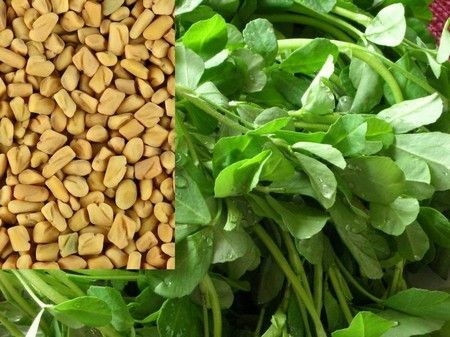
Exotic, many-sided and mystical. .. bob
Spice plants can be very useful in their country because of the "habit" of the body. But, having included them in the metabolism of a person who has never used such drugs before, one can get an unexpected effect, unfortunately, not always positive. This "intercultural barrier" in folk medicine and traditional cooking should be cautiously overcome. Fenugreek - an ordinary spicy plant for Asians - can seem to taste too sharp and fragrant, so it is necessary to approach with all delicacy to mastering this new product for yourself.
In the photo the seeds of fenugreek are a bit like corn kernels. In fact, this plant belongs to the family of legumes, and, accordingly, it has pods in which "beans" ripen, possessing a sharp specific coumarinic odor and being a "super concentrate" of useful properties of the plant. The taste of "beans" fenugreek is sweet with a touch of bitterness, so they are fried - so you can achieve the taste of burnt sugar.
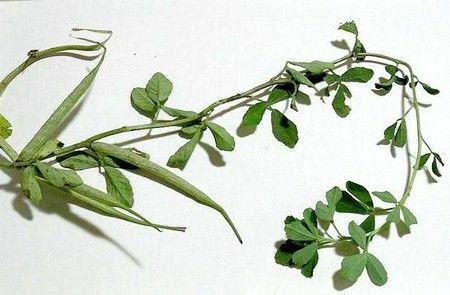
is obtained. This plant has about 130 varieties widely spread around the globe. Where only does not grow fenugreek! But the birthplace of this amazing spicy aromatic plant is considered Asia Minor, here it is still preserved in its original form. Fenugreek can be annual and perennial. As a seasoning it can be used thrice: as greens, whole and ground seeds( with or without pods).At the same time, spices made of fenugreek of blue and hay are distinguished. Oil is also known from the fruits of this plant.
Advice: Fenugreek - unpretentious culture, so it can be planted on the site and even on the windowsill, such as salad greens! A small tub is suitable for this.
Fenugreek: a small dictionary of names
If you try to give fenugreek a different name, you can "get lost"!Apparently, in connection with its relevance and ubiquity, each people tried to give it their own unique name, so we got completely inconsistent names of this plant. One coincides - many of its varieties are used as a valuable fodder plant, which is very popular with pets.
In this regard, there are naming "camel grass", "blue goat shamrock", "fenugreek hay", "Greek hay".The word "Fenugreek"( or "Fenugreek", from the Latin Trigonélla foénum-graécum) is translated as "the horn of a goat".Perhaps, in this way, the name entrenched two qualities - the shape of the pods, resembling thin curved goat horns and the agricultural purpose of the plant. By the way, there are historical records indicating that the inhabitants of Hellas were familiar with the fenugreek, therefore, the names "Greek hay", "Greek soyce" are not accidental.
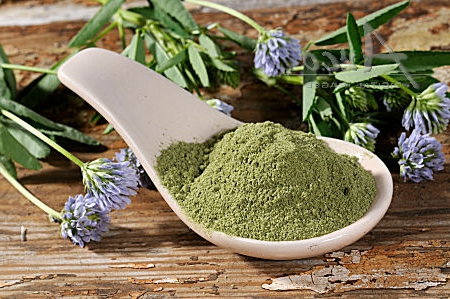
In the Oriental culture, the spicy properties of the plant prevailed, which can be traced in the same names. In Egypt and Ethiopia, "cultivated" fenugreek is called "hilba"( al-hulbah from Aramaic, Hilbeh - "milk") and add the powder from its "beans" to the bread dough, which in Arabic is called "hulba"Ethiopian - "abish"."Milky" name is consonant with the Slavic name "gunba"( sweet blue) and is due to the fact that fenugreek has a lactogenic effect on the organism of a nursing woman.
In Georgia, dried and chopped pods with fruits of blue fenugreek are called "uqho-suneli" - literally "someone else's dry spice".This seasoning is green.
Chaman is also a kind of seasoning from dried fruits of fenugreek, reminiscent of flour of large grind and having a light color and a slight nutty and partly mushroom flavor. This name is common in Armenia. In India, such powder-powder is called metkhi or shambala, which indicates the trembling attitude of Indians towards this plant.
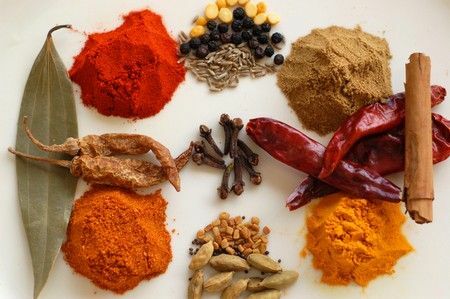
Chemical composition and useful properties of
The greatest amount of useful substances contains not fenugreek or flowers, but seeds:
- alkaloid of trigonellin( 0, 3%);
- fatty oils( 6%);
- nicotinic acid( 3.5-18 mg%);
- mucous substances( up to 30%);
- essential oils( 0.3%);
Among the valuable components of the chemical composition of shamballa, dietary fiber, vitamins( C, B1, B2), folic acid, rutin, flavonoids, phytosterols, antioxidants, tannins, lecithin, choline, minerals and salts of iron, phosphorus, potassium, calcium, magnesium,sodium, zinc, arsenic.
Energy value 1 tbsp. Shamballa seeds - 28 kcal.
Fenugreek owes its healing properties to such a rich seed composition. Here are just some of the useful qualities of this amazing product:
- stimulating digestion, improving appetite;
- normalization of metabolism in case of weight loss and diabetes, lowering of cholesterol level in blood;
- enveloping properties used for irritating the mucosa of the digestive tract;
- antiparasitic action;
- stimulation of intestinal motility, getting rid of constipation;
- improvement of heart function, lowering of blood pressure, normalization of hematopoiesis in anemia;
- treatment of respiratory system diseases of colds;
- removal of toxins through the lymphatic system;
- strengthening of masculine and feminine health;
- toning up action, including during the recovery period after illness or surgery;
- joint repair in severe forms of arthritis and polyarthritis;
- fight against oncological diseases;
- tissue repair in the treatment of external abscesses.
Fenugreek oil is also an ancient tool for maintaining health. Thus, in the tracts of Avicenna, it is mentioned as an effective aid in the treatment of diseases of the throat and lungs, ulcerous formations and tumors in the stomach and intestines, a tonic and cleanser. Now, shamballa oil is a valuable export product that is produced in Arab countries. It is used as an anti-inflammatory for the face and scalp.
Shamballa tea has cleansing properties, it can be consumed up to three times a day. If you follow a rational diet, getting adequate physical activity, you can say goodbye to excess weight.
Recipe for "eastern" tea from fenugreek seeds:
It will be required: for 1 serving - 0.5 tsp.powder of shamballa or whole seeds, 250 ml of boiling water.
Preparation: Boil on a slow fire the required number of portions about 5 minutes, to taste, you can add a slice of lemon, fresh mint leaves, honey.
Attention: With a significant "slagging" of the body when taking this tea, a change in the smell of perspiration and discharge is possible - thus the body is cleared. With the observance of individual hygiene, this period will pass without inconvenience, and in the future the body will get a pleasant spicy aroma of this plant.
Benefits for female health and beauty
Fenugreek has "specific" useful properties for women:
- beneficial effect on women's health, relief from infectious and inflammatory diseases;
- restoration of fertility, normalization of the menstrual cycle, stimulation of ovulation by restoring the production of the hormone prolactin;
- during breastfeeding with tea made of fenugreek( the recipe is shown above) can improve lactation;
- analgesic effect in painful menstruation;
- enhancement of contraction and toning of uterus tissues that are used in labor pains;
- recovery of the woman's body after delivery;
- hormonal support of the female body during menopause;
- is an aphrodisiac used to enhance sexual desire;
- for hair: used to accelerate hair growth, combat dandruff and dermatitis of the scalp;
- cosmetic qualities for facial and body skin: getting rid of inflammations, pustules, cleansing and lightening of skin tone;prevention of premature skin aging.
Here are just two useful recipes used by oriental beauties:
- Hair mask.1 tspground fenugreek mix with 2-3 tablespoons.olive or other quality vegetable oil, rub the resulting mixture into the roots of the hair, evenly distributing it, warming the head. The mask needs to be washed off in half an hour.
- Mask for cleansing the skin of the face.1 tspground fenugreek mix with 1 tbsp.cream or olive oil, apply on face for 10 minutes, rinse.
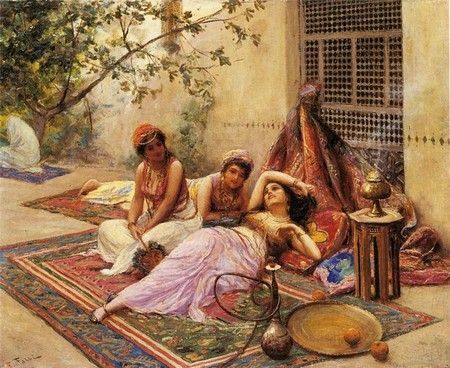
Spicy spice for true gourmands
Fenugreek as a seasoning is used in several variations - whole seeds( irregularly shaped resembling cubes) or ground raw materials, including leaves and pods.
If possible, preference should be given to freshly harvested fenugreek, prepared from lightly fried seeds - so the spice will have a pleasant nutty taste, but without bitterness.
Fenugreek as a spice is a part of many complex Indian and Arab aromatic mixtures( chutneys, curries, etc.) used in the preparation of coffee, desserts, delicacies from fish, salads, meat and vegetable dishes - soups, gravy, goulash,stew.
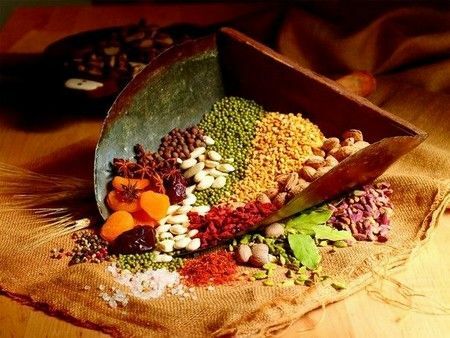
Storage advice: Whole seeds are better preserved if they are in a hermetically sealed opaque container. Ground shamballa "afraid" of bright light, so it is better to buy it in small quantities, so that the seasoning will not lose its special spicy taste and aroma.
Cautions
Given that shamballa - a fairly strong natural remedy, we must remember that the use of fenugreek seeds can turn out not only one benefit, but also harm, if you get carried away to fanaticism. So, it is not recommended to take more than 100 grams of drugs per day on the basis of this miracle drug. The seasoning is created to give a flavor and a light aroma, so do not get carried away. In the treatment should also pay close attention to the dosage and not exceed the established rate, because you can get a strong digestive disorder. In addition, there are certain conditions and diseases, when taking medicines based on fenugreek fraught with complications:
- pregnancy;
- postoperative and postpartum period;
- diseases of the female genital area, accompanied by bleeding;
- increased coagulability of blood components;
- is an insulin-dependent form of diabetes;
- hormonal disorders, thyroid disease.
So, focus on your well-being and be restrained in mastering new flavors and medicinal properties of plants - then nature will give you health, beauty and longevity!
The useful properties of fenugreek can also be learned from the video:
